An author and retired barrister, the owner of this lovely Karmann Ghia is well qualified to write about the qualities of his stylish German coupé — so we asked Chris Marnewick to tell his own tale
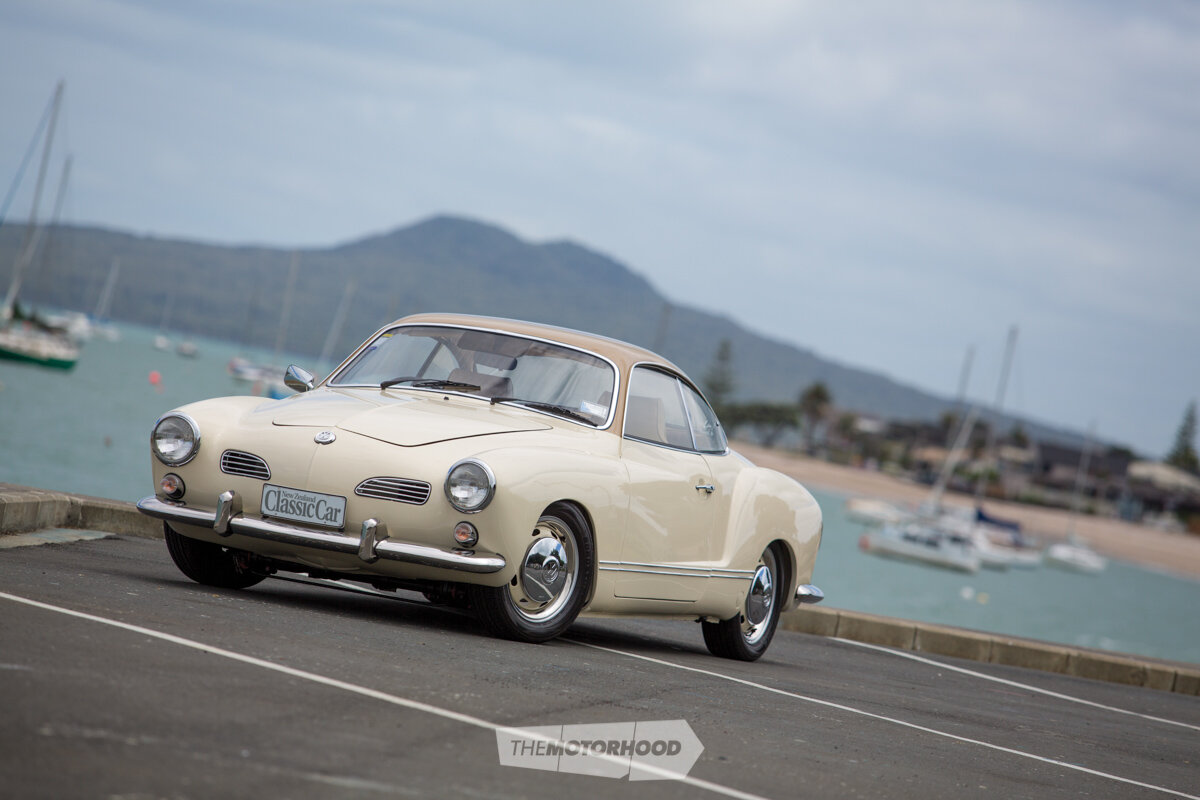
I can trace my passion for cars — my wife might call it an obsession — back to a certain Christmas Eve. It was just before midnight, and my mother was marching myself and my siblings to church. She led the way, lighting the dusty farm road ahead with a small torch. Cars and trucks carrying other church-goers passed us one by one. None slowed down, and no one stopped to give us a lift. Eventually, I had to ask, “Why do other people ride in cars and we have to walk on foot?” My mother replied, “Don’t worry; if you work hard enough at school, you will be able to buy any car you like.”
That was South Africa in 1959. The nearest town with electricity and tarmac roads was 120 kilometres away.
Twenty years later, I was in practice as a barrister, and I was able to buy my first good car — a Mercedes 230. I had driven VW Beetles before, and, after that, exactly as my mother had predicted, I could buy any car I liked, so I did. The vehicles I owned included a 1984 Alfa Romeo Spider, still the nicest car to drive; a 1980 Porsche 911SC; another Mercedes, a 260E; and all manner of SUVs. We brought a BMW Z3 to New Zealand when we settled here in 1999 and acquired more Porsches — a 1996 993 Cabrio 4, followed by a 2007 Boxster S, and, later, a 1996 993 Targa Tiptronic. And that’s without counting my wife’s car preferences, mainly BMW 3 Series and Honda.
My dream car? Well, I’m driving my dream car — but maybe a Porsche 356C cabriolet?
Karmann Ghia — the evidence
The coachbuilder Wilhelm Karmann persuaded the directors of Volkswagen to allow him to put a cabriolet top on their VW Beetles. VW provided the bodies, sans roof, and Karmann added the soft tops. After Karmann’s death, his son, also named Wilhelm, had a chance meeting, at a motor show, with Luigi Segre of the company Carozzerria Ghia of Turin.
While there is some intrigue behind the true origins of the design of the car that Karmann Jnr planned to build and VW would name the ‘Karmann Ghia’, the end result was that VW launched its VW Karmann Ghia sports car in 1955. The models of the first few years — up to 1959 — are known as ‘lowlights’, because the headlights are situated on a slightly sloping nose. From 1959 until the Karmann Ghia was replaced by the Scirocco, its basic shape and configuration remained unchanged.
The Karmann Ghia is built on a slightly wider Beetle chassis, has a standard VW air-cooled engine driving the rear wheels, and uses many of the parts and components of the Beetle and, indeed, other air-cooled VW models, such as the Kombi and trucks.
The simplicity of the engineering of the Karmann Ghia, coupled with the ready availability of most parts, makes it a relatively easy car to restore. That is until you get to the bodywork!
My Ghia was built on June 5, 1968, at Osnabrück in Germany and left the factory on June 12 that same year, destined for delivery to the port of Yokohama on consignment to Yanase Inc., the importer of VW into Japan. Its original exterior colour was Lotus White with red leatherette upholstery, but, by the time I bought it, a prior owner had painted it blue and replaced the upholstery with a sandy-beige–coloured vinyl.
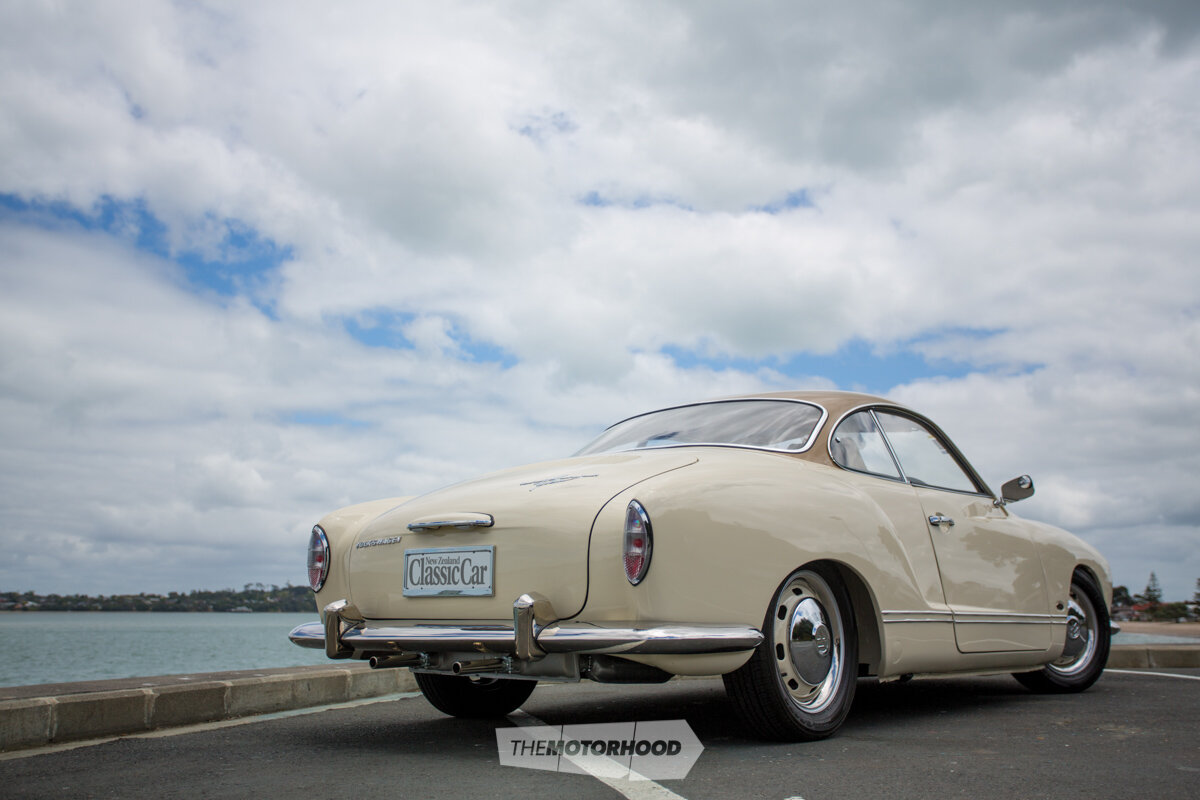
Discovery
In August 2013, on our way to Rotorua in our 993 Targa, my wife and I drove past the V-Dub Shoppe outside Hamilton and glimpsed what would become our Karmann Ghia on the side of the road as we swept past. We stopped on the return journey to check it out. I felt sorry for the Ghia, standing next to a Beetle and a VW Kombi, as all of them were in bad shape.
Later, in October, we went to look at a 1972 Beetle in Tauranga. I wanted to restore a car. I had retired from legal practice and, not to put too fine a point on it, I was bored. I had by then published three novels, the last two of which featured cars. I decided to restore a car and to use it as the backbone of a novel in my preferred genre, creative non-fiction.
The Beetle turned out to be left-hand drive, so I let it go. On the way home, however, we stopped again at the V-Dub Shoppe — the Ghia was still there. Weeds were coming up though its floor pan.
Still feeling sorry for it, I decided to buy it. The owner turned out to be Tony McCall, a champion off-road racing driver, and I bought the car on an as-is-where-is basis. Tony had imported it from Japan, but, because it was severely rusted in so many places, it could not be complied. The NZTA note said, “Rust under body … repair cert required for under-body corrosion, damage kick-up panel … and structural damages and rust all round …”
I mentioned earlier that I was bored. I needed something to do, and wanted to work on the car myself. There were obviously going to be aspects of the work that would be beyond my ability. That, coupled with the fact that I work to deadlines — and my deadline for this project was two years — meant I would have to get professionals to do the most important parts of the work.

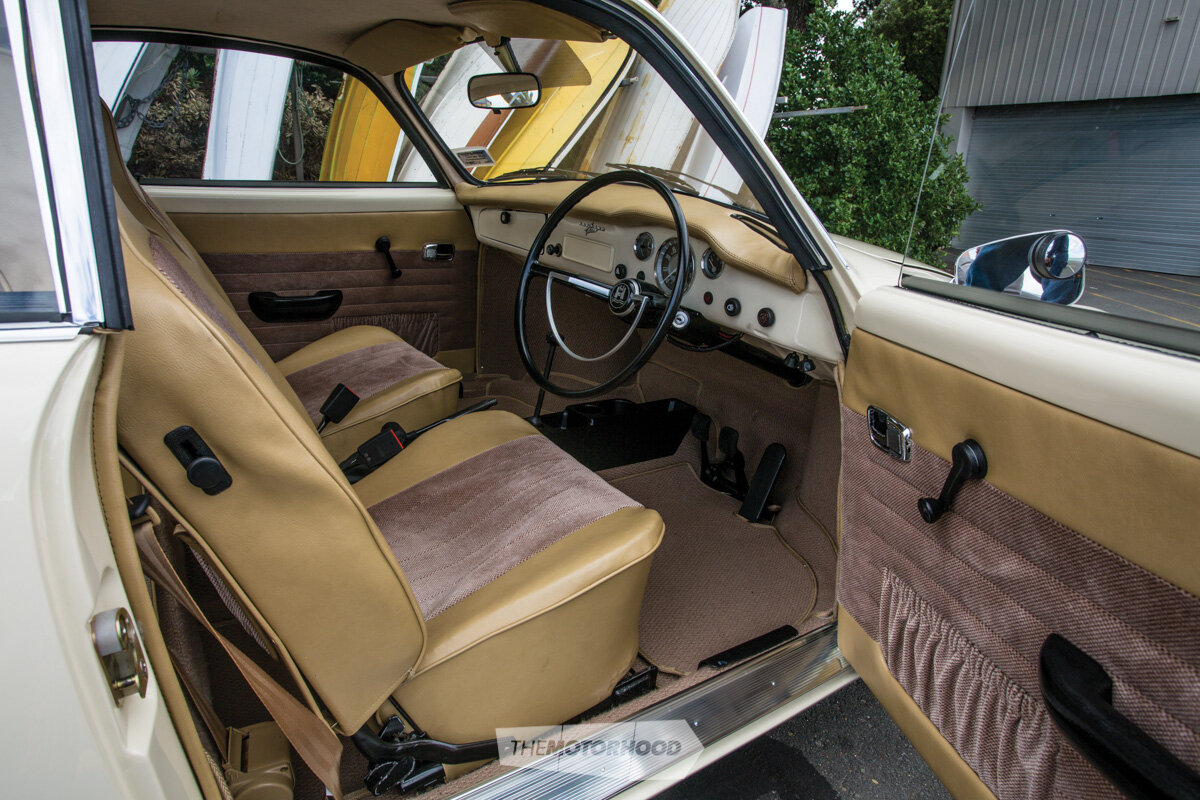
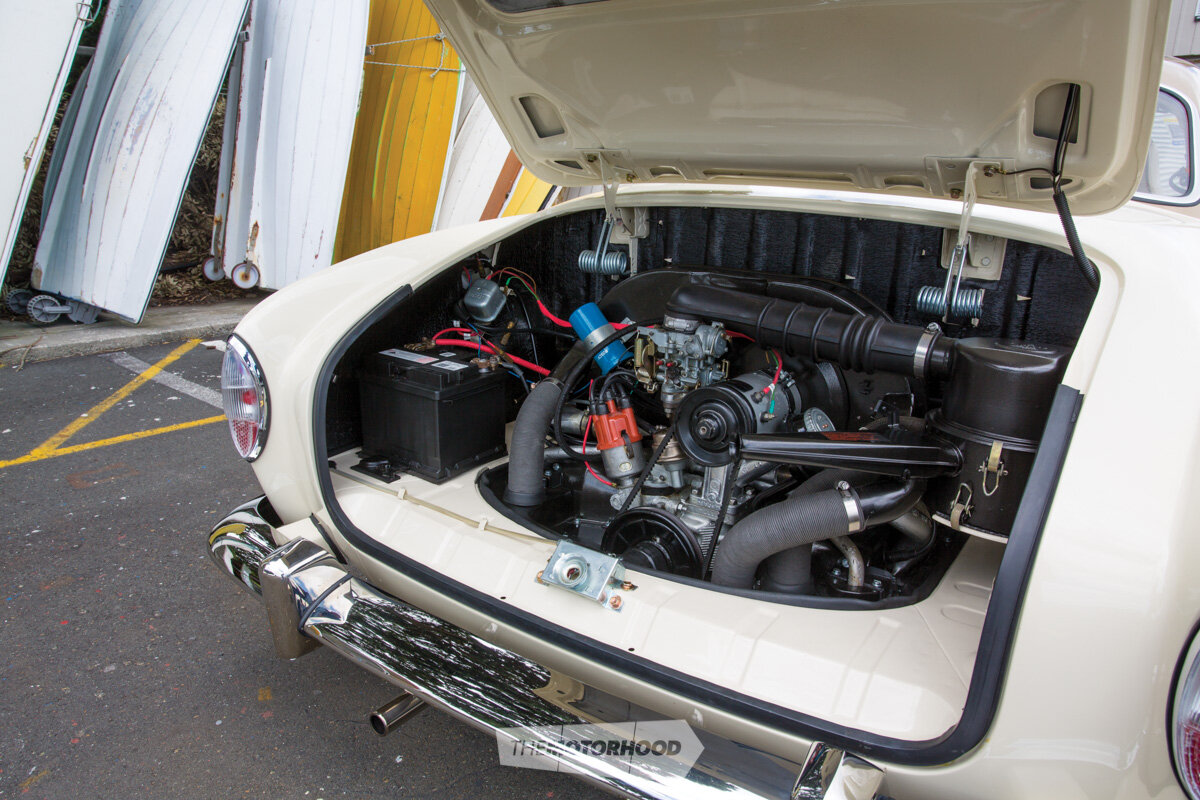
Acceptance of service
The first thing we did was to decide on a restoration policy.
First, we would use as many parts that came with the car as possible, even if they had slight blemishes. Secondly, I would record everything we did in a blog on The Samba (thesamba.com) in the Ghia forum. Thirdly, I would include the outline of the novel I intended to write — which would incorporate the restoration of the Ghia as the non-fiction component of the novel — in the thread of my restoration on The Samba.
The project started in my garage as we stripped the car of all parts that could be taken off it: the seats, carpets and upholstery, all rubber, door cards and quarter panels, all chrome and anodized aluminium strips, the dash and instruments, radio and radio aerial, mirrors, wiring, lights, bumpers, top-of-engine components, hoses, fuel tank, door and quarter windows, door handles and quarter-window latches.
Everything was cleaned, with small parts bagged and labelled. I made a note of every item that needed to be replaced and kept aside all parts that we could repair or refurbish ourselves.
When there was nothing further to be taken off the car, we sent it to Ted Irwin of Henderson Classic Car Restorations. Ted took the body off the chassis and ‘skinned’ the body: the inner and outer body panels on a Karmann Ghia are welded together, and the car had to be split at the welds in order to get at all the rust. The body parts were sent for media blasting and Ted replaced the floorpans with new pans that I had sourced from Germany.
At this point, with the project appearing to be much larger than I had anticipated, we brought everything back to my garage. For a period of about six months, we cleaned and repaired many of the smaller components, while pondering what to do about the body repairs. Parts were ordered, along with replacement body panels, on a month-by-month basis.
During a visit to South Africa, we bought a complete wiring loom from a VW Kombi for about $15 — this provided wires of the correct colours and gauge for the refurbishment of the original wiring loom.
We finished off items big and small, tackling one job at a time. This included reupholstering the seats with new seat covers from TMI Products in the US, cleaning and resealing the fuel tank, sanding the chassis and floorpan back to bare metal, sealing all welded seams and painting with POR-15. The car’s steel wheels were also stripped and refurbished.
The instruments and switches were refurbished too, along with the window-winder mechanism and engine ancillaries. We cut and shaped our own New Zealand pure-wool carpet set and made up a front trunk liner, while the repair and reupholstering of the dash pad — complete with special French stitching — was undertaken by Southern Upholstery of Takanini.

Body of evidence
While all this was going on, we pondered what to do about the bodywork. It was obvious from the time that the body came back from media blasting that the rust damage was far worse than we had anticipated. It also became apparent that the car had been in a collision, and the damage extended into the right door-hinge pillar assembly.
The first step was to source and buy replacement sections for the rusted parts — effectively, for the bottom 20cm of the body, all round. These were readily available from the US, Denmark, China, and Germany. A replacement door-hinge pillar assembly was cut from a Ghia in Washington State; stainless-steel bumpers came from Vietnam, at about a quarter of the cost of repairing and re-chroming the original set.
The next step was to find a panel beater who would be prepared to allow me to do the menial, unskilled work that would otherwise be necessary and costly, even at minimum-wage rates. We found one in the advertisements in New Zealand Classic Car magazine. I phoned Phillip Broadbent of Ngatea Panelbeaters and explained what I had in mind. He agreed that I could help work on the car, on condition that my work would be done under his supervision and that I would have to comply with all the safety regulations applicable to his workshop.
The result was an education and an experience that combined to make the last year one of the happiest of my life. I watched in awe as the workshop toiled on other projects — farm implements; buses; big trucks; small cars needing windscreens; campervans; a mobile crane; harvesters; and, of course, some classic cars, including my own.
The work on my car progressed slowly. The workshop was busy, and Phillip insisted on doing the metal work himself, one section at a time. The accident repair took quite some time, with the replacement door-hinge pillar assembly facilitating that part of the repair considerably. Some replacement panels were not to Phillip’s liking, so he fabricated panels that fit better by cutting, shaping the metal on various machines, and hammering away until he was satisfied with the result.
The doors were rusted so badly that I had to buy new door skins from a German supplier. Phillip needed to do some minor repairs to the door frames. The replacement of the heater channels and rockers constituted a huge structural repair to the body. Braces had to be welded in to keep the door spaces uniform, and of exactly the right dimensions. When we finally fitted the doors and found that the door gaps were within the manufacturer’s specification, the whole workshop sighed with relief.

Paint appeal
Winton Mitchell subcontracts to Ngatea Panelbeaters as a specialist painter. He has a special interest in classic VWs and kept a watchful eye on the body repairs, knowing that he was going to have to paint the car. With the chassis and engine back at my home in Auckland, Winton was able to prepare the body for paint and get to all the nooks and crannies that would otherwise be impossible to reach. He was fastidious to the point of allowing me to work only on the underside of the body panels, where I did many days’ worth of sanding and seam sealing before he was satisfied. I offered to help with the block sanding, but he wouldn’t hear of it. I soon saw why: he could spot blemishes where I saw nothing wrong, and several coats of high-bulk primer went on the body, with each coat followed by more block sanding and wet sanding by hand. Watching an artist at work is one of the unadulterated pleasures in life.
I chose Lotus White for the body because that was the original colour, and selected Gobi Beige for the roof for two reasons — first, that was a VW colour of the same year, 1968, and secondly, the colour would enhance the colour scheme we had chosen for the interior. If a third reason were required, I would say that the car’s overall appearance and subtle lines and curves are enhanced by the addition of a second colour.
In my view, while not detracting from the quality of the metal work underneath, the paintwork is perhaps the best feature of the car as restored.
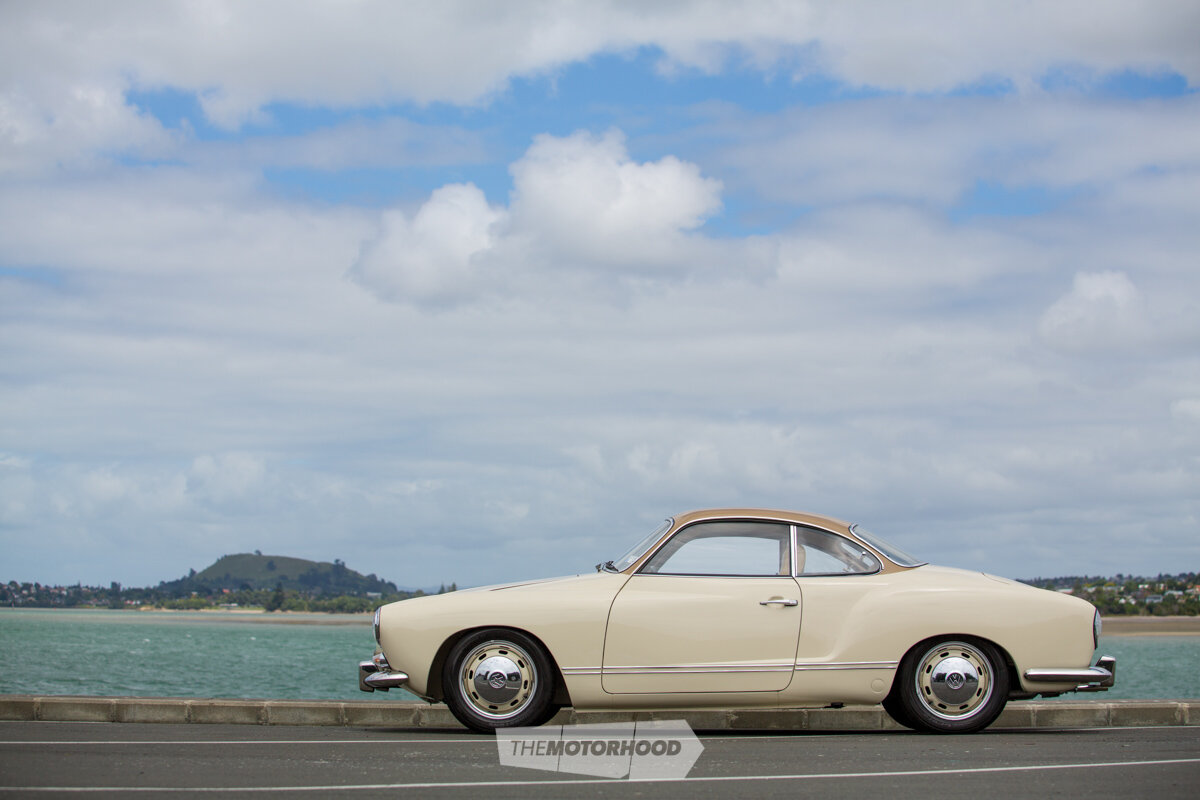
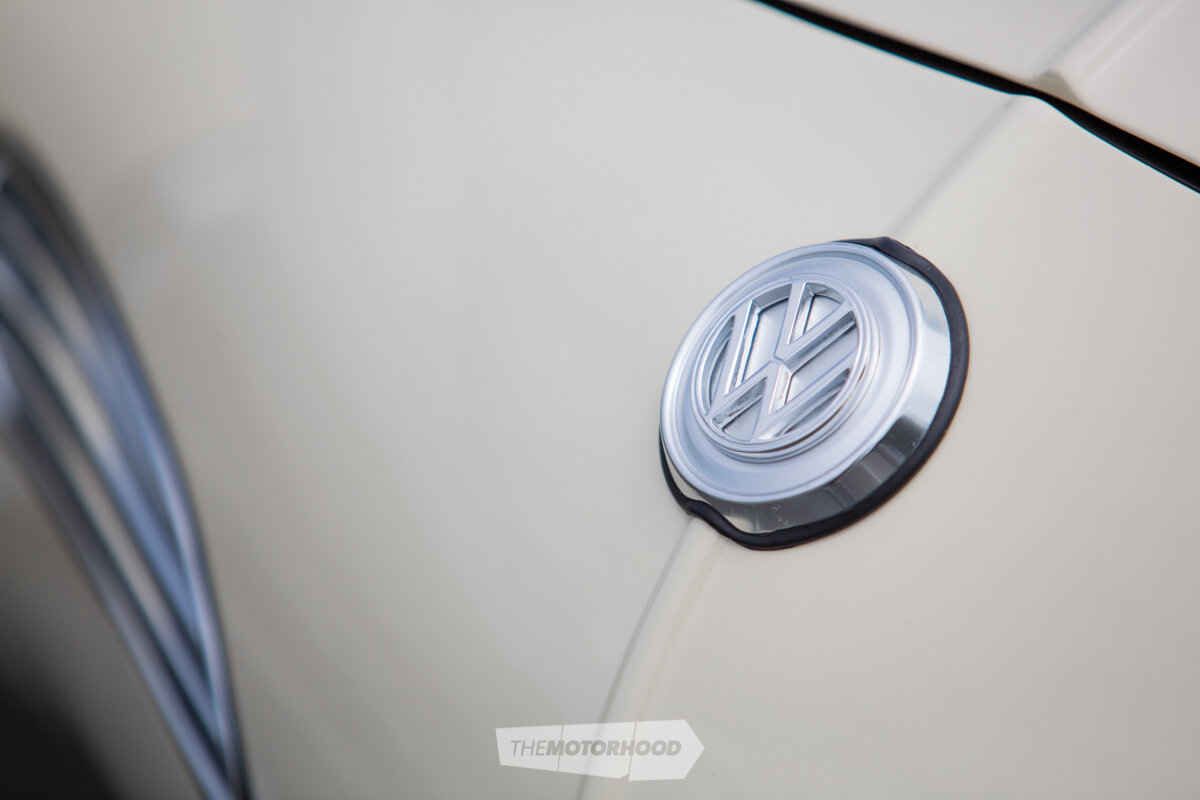
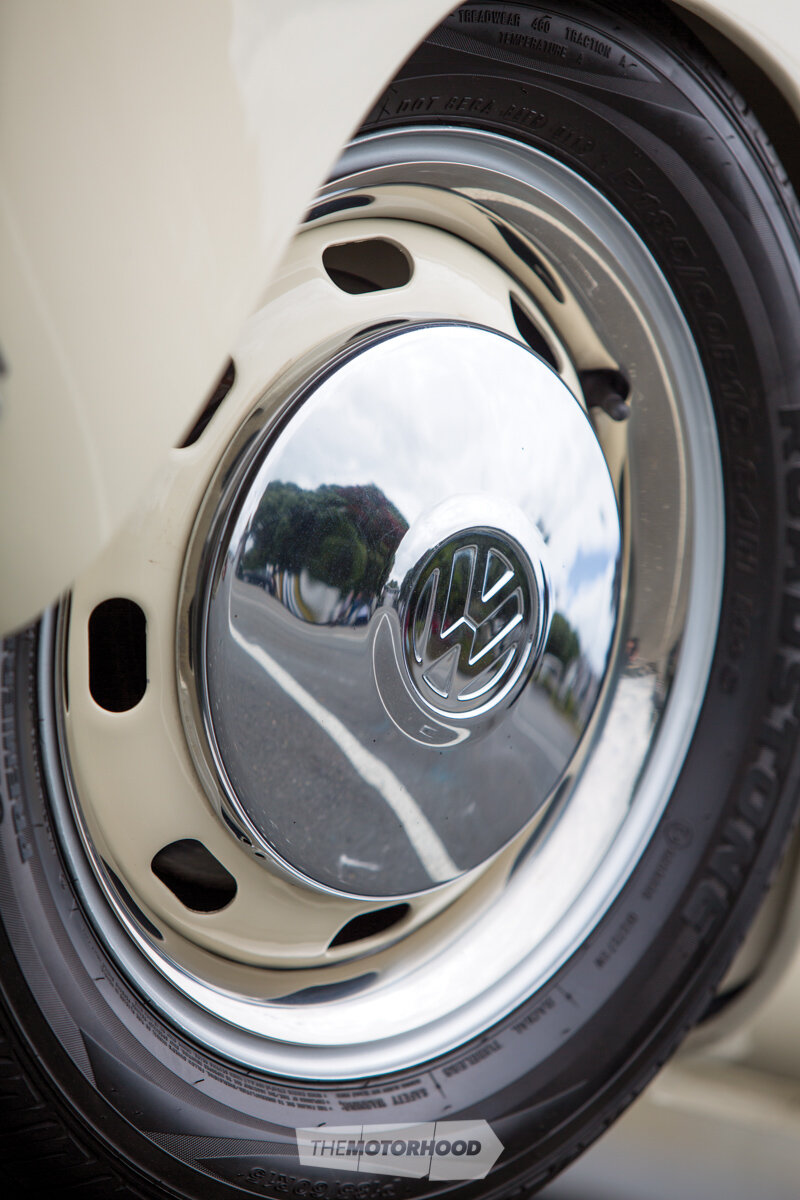
Engineering decree
While the body was in the paint booth, the chassis and engine went to Qualitat European Motors for the latter to be reconditioned and the suspension, brakes, and fuel lines to be installed. It was then found that the engine block was not original to the car and that it was shot anyway. So, on the advice of Qualitat’s workshop manager, Vagn Dyson, we installed a reconditioned 1641cc engine using the old top-of-the-engine parts that my wife and I had refurbished — I had already installed new shock absorbers and brake lines.
With everything in place, the chassis — now fitted with the reconditioned engine — went back to Ngatea, where my wife and I spent a few days installing sound deadening to the floorpans and internal sections of the body, including the underside of the roof and inside the doors.
We also installed a new headliner — that took a couple of days before we were ready to reunite the body and chassis. We fitted the doors and front and rear trunk lids — they had been painted separately — and then the process of reinstalling everything that had come off the car began.
We fitted the front and rear windscreens — both original but polished by Novus — and the steering column (temporarily).
Final judgement
When the body was ready to go back on the chassis, I phoned my insurer and enquired about classic car insurance. They wouldn’t allow me to convey the Ghia on a trailer. I begged and pleaded — I had spent more than a $1500 on transporting the body and chassis here, there, and everywhere. No luck. I tried again later but still no luck. I then phoned Vero, and it took fewer than 90 seconds to sort out a policy that included cover while on a car trailer hauled by me. Five minutes later, my usual insurer phoned back — and said they had made a mistake and that they did, in fact, provide cover for the car while on a car trailer. I didn’t take up that option.
Because the Ghia had come into New Zealand damaged, the repair work had to be inspected and certified. Barry Robinson, a qualified repair certifier, regularly inspected the car during the repair work at Ngatea Panelbeaters and issued a final certificate (Form LT308 08/14) on November 20. A final inspection was performed by Christopher Karl at VINZ, Mount Wellington. Vagn Dyson quickly cleared up the three issues discovered during that inspection — a tail light not working, play in the left front wheel bearing, and play in the steering box — and the Karmann Ghia was registered and licensed on November 25, 2015, exactly two years, one month, and one week after I’d bought it.




